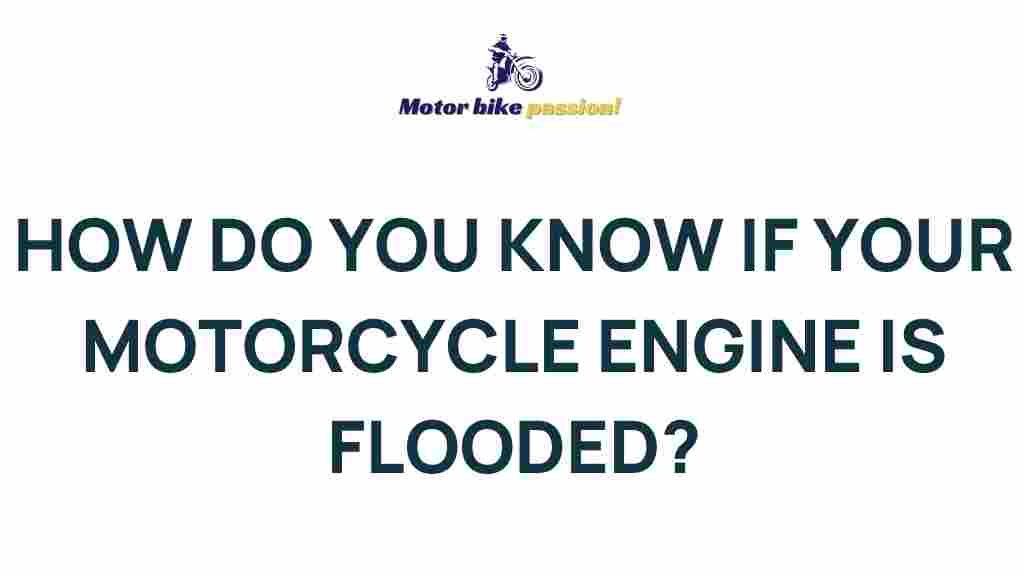Uncover the Mystery: Signs of a Flooded Motorcycle Engine
Motorcycles are a popular choice for many riders around the world, offering freedom, excitement, and an unparalleled sense of adventure. However, just like any vehicle, motorcycles can encounter issues that require troubleshooting and repair. One common problem that many motorcycle owners may face is a flooded engine. Understanding the signs of a flooded motorcycle engine is crucial for timely maintenance and repair, ensuring your bike stays in optimal condition. In this article, we will delve into the signs, troubleshooting, and repair methods associated with a flooded motorcycle engine.
What Does It Mean When a Motorcycle Engine is Flooded?
A flooded motorcycle engine occurs when an excessive amount of fuel enters the engine’s combustion chamber, creating a situation where the engine can no longer start. This can happen for several reasons, including:
- Choking the engine too much during startup
- Poorly adjusted carburetors
- Faulty fuel injectors
- Defective ignition systems
Recognizing the signs of a flooded motorcycle engine early can save you time and money in repairs.
Signs of a Flooded Motorcycle Engine
As a motorcycle owner, it’s important to be aware of the signs that indicate your engine might be flooded. Here are some key indicators:
- Difficulty Starting: If your motorcycle struggles to start or doesn’t start at all, it may be due to a flooded engine.
- Excessive Fuel Smell: A strong odor of gasoline, especially when trying to start your motorcycle, is a clear sign of flooding.
- Engine Cranking but Not Starting: If the engine cranks but fails to ignite, flooding is a likely cause.
- Black Smoke from Exhaust: If you see black smoke coming from the exhaust during cranking, it indicates an excess of fuel.
- Backfiring: A flooded engine may lead to backfiring as the excess fuel ignites inappropriately.
Understanding the Causes of a Flooded Engine
Identifying the causes of a flooded engine can help in preventing future occurrences. Here are some common reasons:
- Improper Use of Choke: Using the choke incorrectly can cause too much fuel to enter the engine.
- Faulty Fuel System: Problems with the carburetor or fuel injectors can lead to flooding.
- Electrical Issues: A malfunctioning ignition system may prevent the engine from igniting the fuel properly.
Troubleshooting a Flooded Motorcycle Engine
If you suspect that your motorcycle engine is flooded, follow these troubleshooting steps to diagnose the issue and begin the repair process:
Step 1: Check the Choke
Ensure that the choke is in the correct position. If the choke is engaged when it shouldn’t be, it can cause flooding.
Step 2: Inspect the Spark Plugs
Remove the spark plugs and examine them for signs of fuel saturation. Wet spark plugs indicate flooding. If they are dirty or fouled, clean or replace them.
Step 3: Check for Fuel Leaks
Inspect the fuel lines and connections for any leaks. A leaking fuel line can cause excess fuel to enter the engine.
Step 4: Evaluate the Carburetor or Fuel Injection System
If you have a carbureted motorcycle, check the float level in the carburetor. For fuel-injected motorcycles, ensure the injectors are functioning correctly.
Step 5: Crank the Engine
After completing the previous steps, try cranking the engine again. Allow it to crank for a few moments to expel excess fuel from the combustion chamber.
Step 6: Wait Before Trying Again
If the engine still doesn’t start, wait a few minutes before attempting to start again. This allows any remaining fuel to evaporate.
Repairing a Flooded Motorcycle Engine
If your motorcycle engine remains flooded after troubleshooting, consider the following repair steps:
1. Clean or Replace Spark Plugs
As mentioned, if the spark plugs are wet or dirty, either clean them with a wire brush or replace them entirely. This ensures proper ignition.
2. Adjust the Carburetor
If your motorcycle is carbureted, adjusting the float height can prevent flooding. Ensure it is set to the manufacturer’s specifications.
3. Fix Fuel Leaks
Repair any fuel leaks found during the inspection. Replace damaged fuel lines or faulty connections.
4. Check the Electrical System
Inspect the ignition system, including coils and wires, ensuring everything is in working order. Replace any faulty components.
5. Consult a Professional Mechanic
If you’re unable to resolve the flooding issue, it may be time to seek help from a professional mechanic. They can perform a more thorough diagnostic and repair as needed.
Preventative Maintenance to Avoid Flooding
Taking care of your motorcycle through regular maintenance can help prevent flooding issues in the future. Here are some tips:
- Regularly Inspect the Fuel System: Check the carburetor and fuel lines for any signs of wear or malfunction.
- Maintain the Ignition System: Regularly inspect and replace spark plugs, ignition coils, and wires.
- Proper Choke Use: Familiarize yourself with the correct use of the choke to prevent flooding during startup.
- Keep the Battery in Good Condition: A weak battery can lead to ignition issues, contributing to flooding.
By staying on top of your motorcycle maintenance, you can reduce the likelihood of encountering a flooded engine.
Conclusion
A flooded motorcycle engine can be a frustrating experience for any rider. Recognizing the signs of a flooded engine is the first step in efficient troubleshooting and repair. By understanding how to diagnose and fix the issue, as well as implementing preventative maintenance, you can keep your motorcycle running smoothly and avoid the headaches associated with flooding. For more detailed information on motorcycle maintenance tips, check out this comprehensive guide.
If you’re still unsure about the condition of your motorcycle engine or need further assistance, do not hesitate to consult a professional mechanic who can provide expert diagnostics and repairs.
Remember, regular maintenance is key to enjoying many safe rides on your motorcycle. Keep it in top shape, and you’ll be ready for the open road!
This article is in the category Maintenance Tips and created by MotorBikePassion Team
